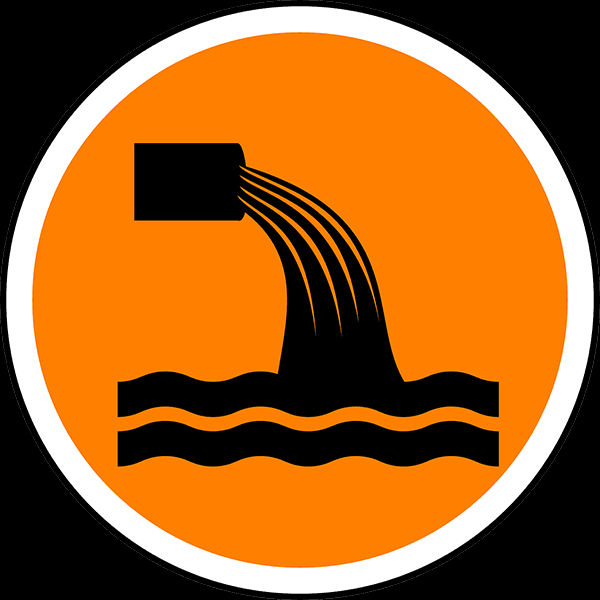Reclaim Waste Fundamentals Explained
Table of ContentsEverything about Reclaim WasteReclaim Waste Fundamentals ExplainedHow Reclaim Waste can Save You Time, Stress, and Money.The Greatest Guide To Reclaim WasteNot known Details About Reclaim Waste
Discover the kinds, incidents, and types of fluid waste. Domestic sewer waste describes the waste and products from a household sewage-disposal tank. This sort of waste is produced by humans in houses, schools, and other structures. This only consists of sewage-disposal tanks that have a drain field. The correct administration and disposal of domestic sewer waste call for liquid waste to be moved to a sewage treatment plant where the appropriate methods and devices are applied to purify and get rid of waste.
Commercial waste commonly includes prospective threats, such as combustible materials or a combination of liquid and solid waste products, and needs an advanced and in-depth disposal process. The disposal of commercial waste normally involves the purification of waste prior to transport to make certain safe and appropriate disposal. Industrial waste is produced from by-products and runoff of industrial processes and manufacturing.
This sort of waste can not make use of the exact same sewage monitoring transportation or procedures as septic or commercial liquids. The commercial waste management procedure needs the examination and screening of fluid waste prior to it undergoes the disposal process (liquid waste removal). Overflow waste is the liquid waste that comes from overflow and excess stormwater in highly inhabited locations or cities
Overflow waste can trigger contamination and flooding if not handled properly. Find out much more about drain cleansing and waste management. Making sure appropriate waste administration can prevent disasters and lower environmental damage. Both individuals in domestic setups and experts in commercial or production industries can take advantage of understanding the processes and policies of liquid waste management.
The Only Guide to Reclaim Waste
Call PROS Services today to discover our waste management and disposal services and the proper means to look after the fluid waste you generate.
(https://forums.hostsearch.com/member.php?271151-reclaimwaste1)This supposed 'wastewater' is not just a vital source however, after therapy, will certainly be launched to our land, waterways or the sea. Utilized water from commodes, showers, baths, cooking area sinks, washings and industrial procedures is understood as wastewater.

water used to cool down machinery or clean plant and tools). Stormwater, a type of wastewater, is overflow that streams from agricultural and urban locations such as roofs, parks, gardens, roadways, paths and seamless gutters into stormwater drains, after rainfall. Stormwater flows untreated straight to regional creeks or rivers, ultimately reaching the sea.
Reclaim Waste for Beginners
In Queensland, the majority of wastewater is treated at sewage treatment plants. Wastewater is carried from residential or industrial sites with a system of drains and pump stations, known as sewage reticulation, to a sewer treatment plant. City governments construct, preserve and operate most sewage treatment plants. Operators are certified under the Environmental Security Act 1994 to release cured wastewater at an appropriate ecological criterion into rivers.
The Division of Natural Resources encourages local governments concerning handling, operating and preserving sewerage systems and treatment plants. In unsewered areas, city governments may call for owners to install individual or house sewage treatment systems to deal with domestic wastewater from bathrooms, kitchens, bathrooms and laundries. The Department of Natural Resources authorizes the use of household systems when they are proven to be effective.
The majority of stormwater receives no treatment. In some new subdivisions, treatment of some stormwater to eliminate litter, sand and crushed rock has started utilizing gross pollutant traps. Wastewater treatment takes place in 4 stages: Gets rid of strong matter. Bigger solids, such as plastics and other items mistakenly discharged to drains, are removed when wastewater is gone through displays.
Wastewater after that moves into big containers where solids work out and are removed as sludge. Oil and scum are skimmed from the surface. Utilizes small living microorganisms called micro-organisms to break down and get rid of continuing to be liquified wastes and fine fragments. Micro-organisms and wastes are incorporated in the original source the sludge. Removes nitrogen and phosphorus nutrients that might trigger algal flowers in our rivers and threaten water life.
Unknown Facts About Reclaim Waste
Nutrient elimination is not offered at all sewage treatment plants because it needs expensive specialised devices. Clear liquid effluent generated after therapy might still have disease-causing micro-organisms - liquid waste disposal.

Most wastewater moves right into the sewerage system. Under the Act, neighborhood governments provide approvals and permits for eco appropriate activities (Periods) entailing wastewater launches that could have a neighborhood effect.
A Biased View of Reclaim Waste
Or else, samples are taken for lab evaluation. Usually lots of examinations are needed to establish the degrees of each of the different contaminants such as oils, hefty metals and pesticides in water. Surveillance gives factual details concerning water high quality and can verify that permit conditions are being met. The info obtained via tracking offers the basis for making water top quality choices.